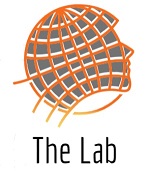Circular Economy Scientific Knowledge Monitoring and Evaluation
This publication [Request Access ] covers an analysis of circular economy scientific knowledge production in the Netherlands (2010-2023).
Section 1 – Publications on Circular Economy in the scientific domain over time:
- The number of CE publications
- The number of CE publications by (top performing) country
- The number of publications per journal
- The national top 1) authors and 2) top institutes with the institutes differentiated in universities,
research institutes, governmental agencies, business, NGO/foundation and other CE actors - The collaboration between institutes
- The number of publications per research field (science categories)
- Industries and sectoral domains covered and investigated by the articles
- The number of publications per circularity strategy (using the R-ladder categories Refuse and
Rethink, Reduce, Reuse, Repair, Recycle, Recover) - Number of publications using the NPCE wording instead of the R-ladder categories: substitute
(Reduce Refuse, Reconsider), narrow the loop, close the loop, slow the loop.
Section 2 – CE and knowledge gaps:
- Linking CE with different knowledge gaps: social, institutional, technical, financial and policy
- Linking CE with education and skills
- Link between CE and SDGs
Section 3 – The publications the CE with other environmental themes and policies
- Linking the CE transition to societal challenges being: circular economy & energy/climate change, CE
& biodiversity (biodiversity loss and degradation), CE & environment (e.g. soil, water air
pollution/environmental impact, environmental degradation) and CE & supply security/critical raw materials, CE & just transition - Linking the CE transition to policy instruments/tools (limited): stimulating instruments/measures, financial instruments, regulatory instruments.
- Linking the CE transition to policy instruments/tools (extended):, communication (e.g. awareness raising), knowledge sharing (e.g. education, advise, matchmaking, helpdesk), finance (e.g. taxation, funding/subsidy), regulatory instruments (e.g. covenant, voluntary agreement, benchmarking, certification system/quality mark, CE standards, product passport, admixing percentage, sustainability/circular reporting)
- CE & eScience/digital innovation/computational techniques (machine learning, maintenance analytics, predictive repair)
- Link between the CE transition and the climate/ energy transition: CE & scope 3 emissions
Section 4- Product category approach
- The ICER focusses on CE &3 product categories: Plastic packaging and beverage cartons (brik), 2) Buildings (more particular houses /dwellings) and 3) Renewable energy techniques (PV, Windmills, Batteries and infrastructure
- The National CE Program focusses on CE & 15 product categories: Plastics (plastic packaging, plastics in construction, plastics in agriculture), consumption goods (electric and electronic devices, textile, furniture, disposables), construction (engineering structures, roads, dwellings/houses, utility buildings (offices commercial- and industrial buildings), Capital Equipment (PV, Windmills, climate control systems à in buildings)
Citation:
Türkeli S. (2024). Circular Economy – Scientific Knowledge in Time and Space. The Netherlands Edition. 2010–2023. United Nations University – MERIT, Maastricht. [Request Access ]
Earlier versions:
 This publication covers an analysis of circular economy scientific knowledge production in the Netherlands (2010-2021).
This publication covers an analysis of circular economy scientific knowledge production in the Netherlands (2010-2021).
- The number of CE publications
- The number of CE publications by (top performing) countries
- The number of publications per academic journal
- The top authors and top institutes with the institutes differentiated in universities, research institutes, governmental agencies, business, NGO/foundation and other science CE actors
- The collaboration between institutes
- The number of publications per research field (science categories)
- Industries and sectoral domains covered and investigated by the articles
- The number of publications per circularity strategy (using the categories Refuse and Rethink, Reduce, Reuse, Repair, Recycle, Recover)
- The publications the CE with other environmental themes and policies and identifying the phase of the circular economy transition
- Linking the publications from agencies, institutes or other knowledge providers with those in the scientific domain
Citation:
Türkeli S. (2022). Circular Economy – Scientific Knowledge in Time and Space. The Netherlands Edition. 2010–2021. United Nations University – MERIT, Maastricht. [Request Access ]
 This publication covers an analysis of circular economy scientific knowledge production in the Netherlands.
This publication covers an analysis of circular economy scientific knowledge production in the Netherlands.
- The number of publications per year
- The number of publications per journal
- The number of publications per research field (“science categories”)
- Industries covered and investigated by the articles
- The number of publications per circularity strategy (using the categories Refuse and Rethink, Reduce, Reuse, Repair, Recycle, Recover)
- Top Authors
- Top Institutes
- Collaboration between Institutes
- Local CE Scientific and Technological Knowledge Activity
- Cities
- Regions
- Circular Economy S&T Knowledge Transition Index | Cities and Regions
- X-Economies: Circular Economy and other Economies
- From CE Science to CE Policy
Citation:
Türkeli S. (2020). Circular Economy – Scientific Knowledge in Time and Space. The Netherlands Edition. 2010–2019. United Nations University – MERIT, Maastricht.
References
PBL (2023) Integral Circular Economy Report 2023 Assessment for the Netherlands, Accessible: https://www.pbl.nl/en/publications/integral-circular-economy-report-2023-assessment-for-the-netherlands
PBL (2021). Integrale Circulaire Economie Rapportage. Accessible: https://www.pbl.nl/sites/default/files/downloads/pbl-2021-integrale-circulaire-economie-rapportage-2021-4124.pdf
PBL (2019). Circular Economie in Kaart, Accessible: https://www.pbl.nl/sites/default/files/downloads/pbl-2019-circulaire-economie-in-kaart-3401_0.pdf
Merli, R., Preziosi, M., & Acampora, A. (2018). How do scholars approach the circular economy? A systematic literature review. Journal of Cleaner Production, 178, 703-722.
National Circular Economy Programme 2023-2030, Accessible: https://www.government.nl/binaries/government/documenten/reports/2023/09/27/national-circular-economy-programme-2023-2030/NPCE+Circulaire+Economie+rapport+Engels.pdf
Türkeli, S., Kemp, R., Huang, B., Bleischwitz, R., & McDowall, W. (2018). Circular economy scientific knowledge in the European Union and China: A bibliometric, network and survey analysis (2006–2016). Journal of Cleaner Production, 197, 1244-1261.
Van Eck, N. J., & Waltman, L. (2011). Text mining and visualization using VOSviewer. arXiv preprint arXiv:1109.2058.
van Eck, N.J., Waltman, L.,(2017). Citation-based clustering of publications using CitNetExplorer and VOSviewer. Scientometrics 111 (2), 1053e1070.
Appendix
Data and Methodology [Download]
Funded by Ministry Infrastructure and Water, PBL Planbureau voor de Leefomgeving




